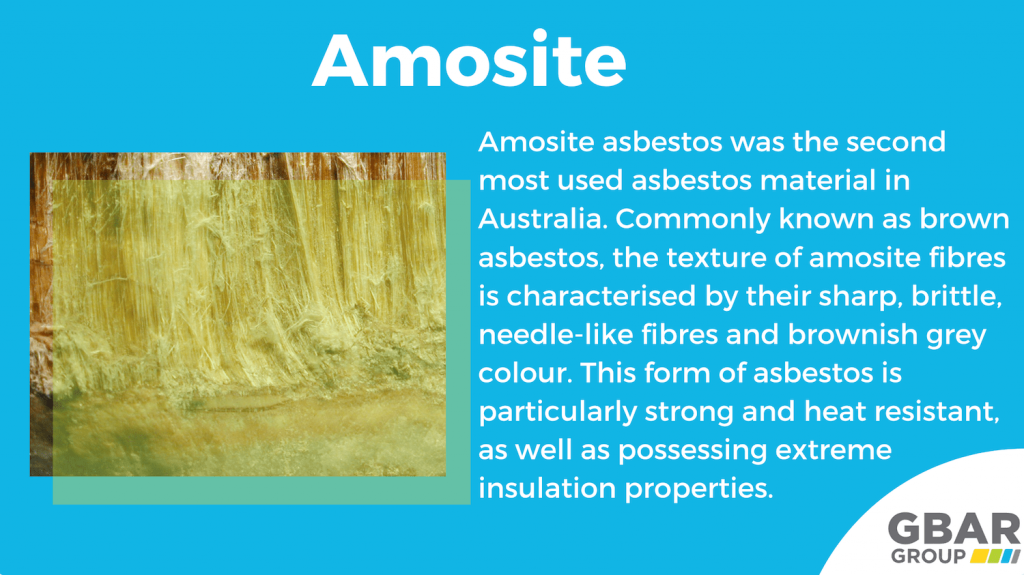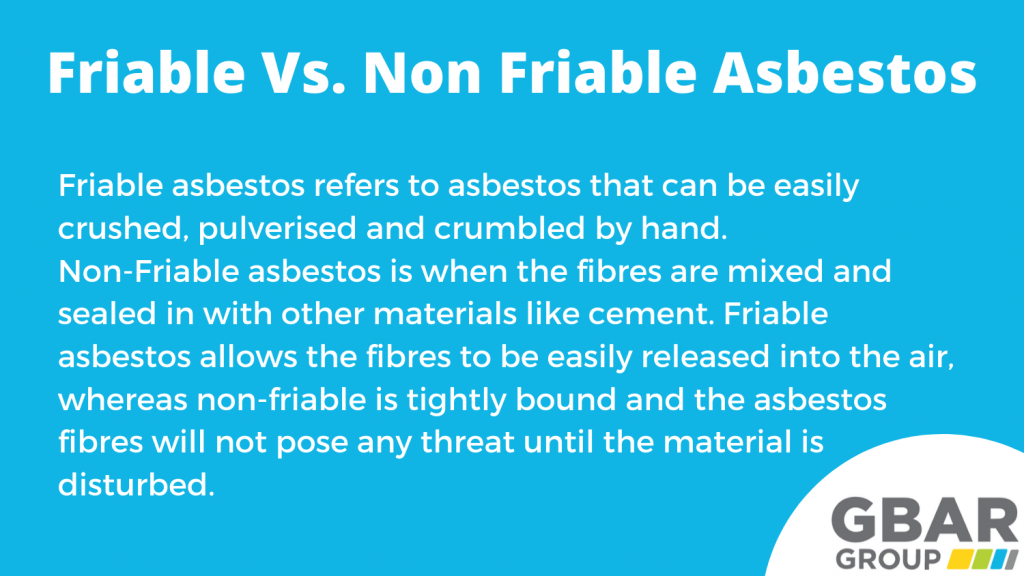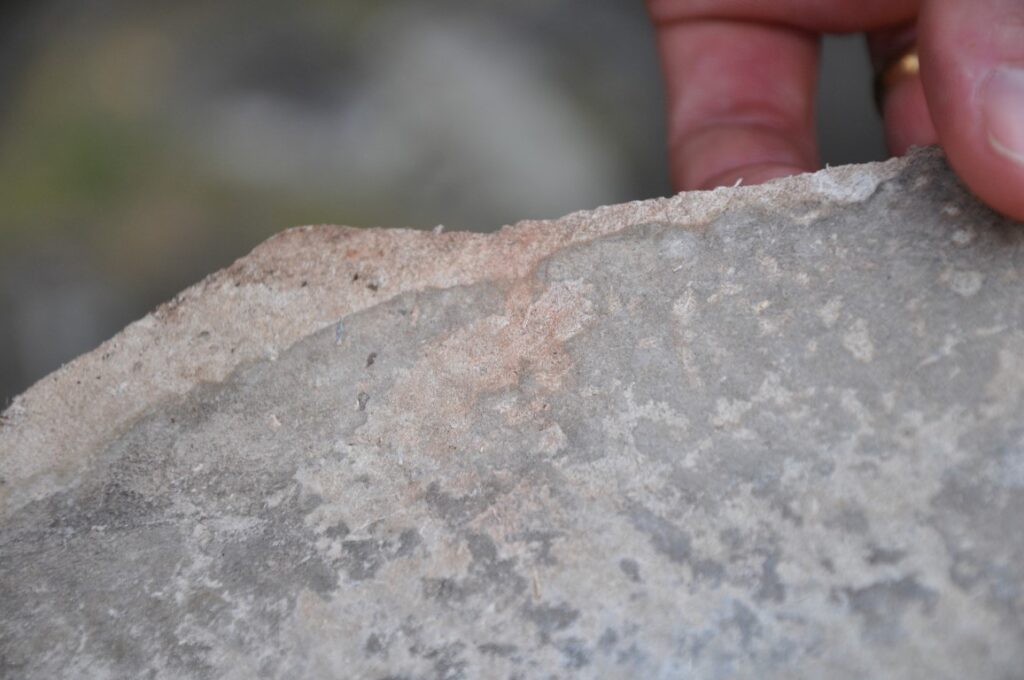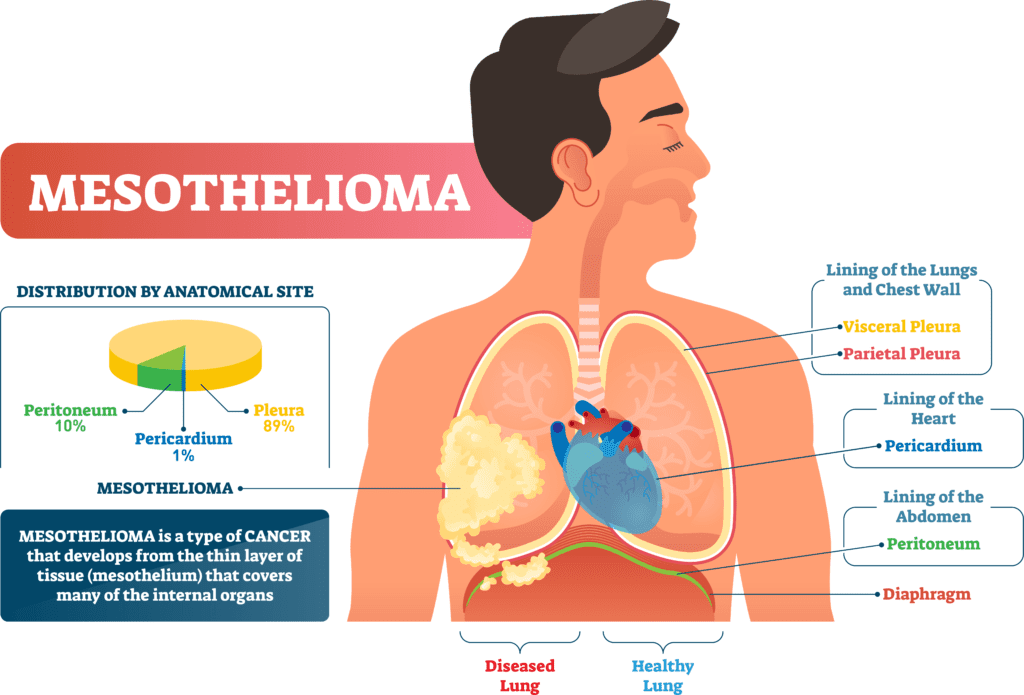In the world of asbestos, one question that often comes up is: What is the most common color of asbestos? While asbestos itself is not visible to the naked eye, it is often found within other materials that have distinct colors. In this article, we will explore the different colors associated with asbestos and shed some light on the most prevalent hue. So, let’s embark on this color journey and uncover the answer together!


What is Asbestos?
Asbestos refers to a group of naturally occurring fibrous minerals that have been widely used in various industries due to their desirable properties. It is important to understand the different types and properties of asbestos to effectively identify and handle it.
Definition
Asbestos is a term used to describe six types of fibrous minerals: chrysotile, amosite, crocidolite, tremolite, anthophyllite, and actinolite. These minerals have been widely used in construction, manufacturing, and other industries for their heat resistance, strength, and insulating properties.
Properties
Asbestos possesses several unique properties that made it popular in various applications. It is resistant to heat, electricity, and chemical damage, making it valuable in insulation and fireproofing materials. Additionally, asbestos fibers are strong and durable, contributing to their use in construction and manufacturing.
Different Types of Asbestos
There are six main types of asbestos, each with its own distinct properties and characteristics. Understanding these types is essential for accurately identifying asbestos-containing materials.
Chrysotile
Chrysotile, also known as white asbestos, is the most commonly used type of asbestos. It is characterized by its long, curly and white fibers. Chrysotile is flexible and has good resistance to heat, making it popular in applications such as thermal insulation and brake linings.
Amosite
Amosite, also known as brown asbestos, is commonly found in insulation products. It has shorter, brittle fibers compared to chrysotile and is often darker in color. Amosite is known for its excellent heat resistance and was commonly used in the construction industry.
Crocidolite
Crocidolite, also known as blue asbestos, has very fine, straight fibers that are blue-gray in color. It is the most dangerous type of asbestos due to its ability to easily release airborne fibers when disturbed. Crocidolite was commonly used in applications where resistance to acid and alkali was necessary, such as in cement and plastics.
Tremolite
Tremolite asbestos is less widely used compared to other types. It is characterized by its brittle, needle-like fibers and can come in various colors, including white, gray, and green. Tremolite asbestos was often found contaminating other asbestos-containing minerals and materials.
Anthophyllite
Anthophyllite asbestos is relatively rare and is often found as a contaminant in other minerals. It has grayish-brown fibers and is less commonly used in industrial applications compared to other types of asbestos.
Actinolite
Actinolite is another less commonly used form of asbestos and is often found alongside other minerals. It can have a range of colors, including white, green, and gray. Like anthophyllite, actinolite asbestos is less commonly used due to its rarity and lower commercial value.
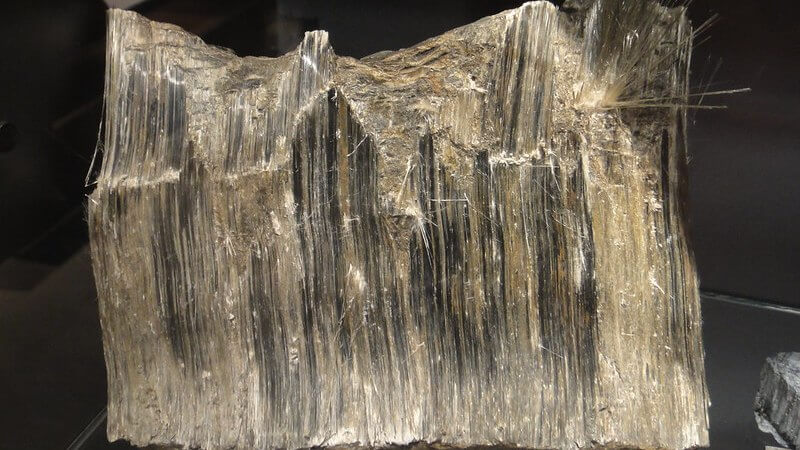

Appearance of Asbestos
Understanding the visual characteristics of asbestos can assist in its identification and proper handling. By recognizing the appearance of asbestos, you can take necessary precautions to avoid exposure.
Color
Asbestos can have various colors, including white, off-white, brown, blue, gray, and green. The specific color can vary depending on the type of asbestos and any impurities present. Additionally, the color of asbestos may change due to weathering and aging.
Texture
Asbestos fibers have a fibrous texture that can feel soft and pliable or brittle and harsh, depending on the type and processing. The texture of asbestos fibers is an important aspect to consider during visual inspection and identification.
Shape
Asbestos fibers come in different shapes, typically classified as either serpentine or amphibole. Serpentine fibers, such as chrysotile, are long and curly, resembling a rope-like structure. Amphibole fibers, including crocidolite and amosite, are straight and needle-like. Being able to identify the shape of asbestos fibers can aid in proper identification.
Color Variations in Asbestos
Asbestos can exhibit a range of colors due to various factors. The color variations can provide valuable information about the asbestos and its potential risks.
White/Off-White
White or off-white asbestos is the most common color variant. It is mainly associated with chrysotile asbestos, which has long, curly fibers. White asbestos was widely used in various applications, including insulation and friction materials.
Brown
Brown asbestos, often referred to as amosite, has shorter, brittle fibers compared to chrysotile asbestos. It is commonly found in insulation products and building materials. The brown color of amosite asbestos is due to impurities in the mineral.
Blue
Blue asbestos, also known as crocidolite, has very fine, straight fibers that are blue-gray in color. Its distinct color is caused by the presence of iron in the mineral structure. Blue asbestos is highly hazardous and associated with severe health risks.
Gray
Gray asbestos is typically associated with tremolite asbestos, which can contaminate other minerals and materials. It has a brittle, needle-like structure and can pose significant health risks if released into the air.
Green
Green asbestos can be found in various amphibole asbestos minerals, such as actinolite and anthophyllite. The green color can indicate a high degree of weathering and aging of the asbestos.
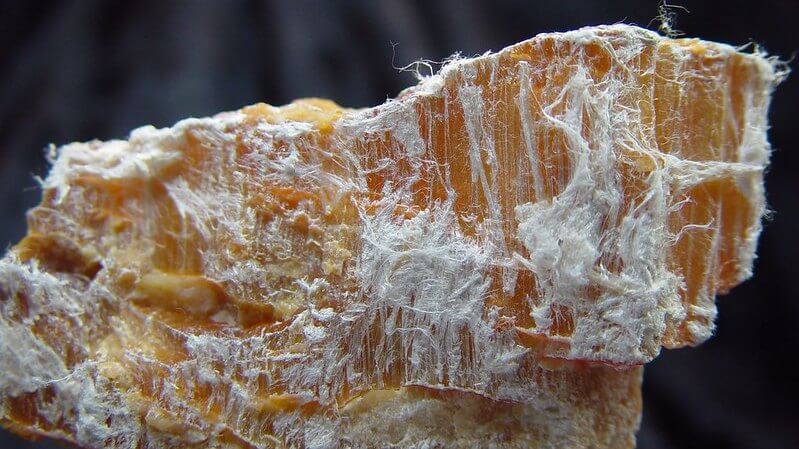

The Most Common Color of Asbestos
The most common color of asbestos is white, which is largely attributed to chrysotile asbestos. White asbestos was extensively used in industries due to its desirable properties.
White Asbestos
White asbestos, or chrysotile, accounts for the majority of asbestos used globally. It has long, curly white fibers that can be easily woven into fabric or incorporated into other materials. White asbestos was widely used in insulation, roofing materials, cement, and various friction products.
Off-White Asbestos
Off-white asbestos, also predominantly chrysotile, is another common color variant. It is similar to white asbestos but may display a slight variation in color due to impurities or weathering. Off-white asbestos shares similar applications with white asbestos and poses similar risks.
Reasons for Color Variations
The color variations in asbestos can be caused by several factors, including the mineral composition, weathering, impurities, and fiber processing. These factors contribute to the wide range of colors observed in asbestos.
Mineral Composition
Different types of asbestos minerals have varying chemical compositions, resulting in different colors. For example, the iron content in crocidolite asbestos gives it the characteristic blue-gray color, while the presence of magnesium contributes to the white color of chrysotile asbestos.
Degree of Weathering
Asbestos can undergo weathering and aging processes that can alter its color. Exposure to environmental factors, such as sunlight, moisture, and chemical reactions, can cause color changes in asbestos. Weathered asbestos may appear gray or green due to oxidation and other chemical transformations.
Impurities
Impurities present in asbestos minerals can affect their color. Minerals that contain impurities, such as iron or chromium, may exhibit colors other than the typical white or off-white. The presence of these impurities can provide valuable information about the specific type and origin of asbestos.
Fiber Processing
The processing methods used to extract and refine asbestos fibers can influence their final color. Fiber processing can involve various techniques, such as bleaching or washing, which can affect the appearance of asbestos. These processing techniques can lead to color variations, even within the same type of asbestos.
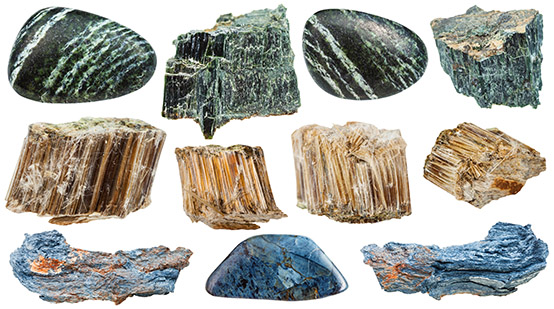

Identification of Asbestos Color
Identifying the color of asbestos is crucial for assessing potential risks and implementing appropriate safety measures. Visual inspection and laboratory analysis are common methods employed for asbestos identification.
Visual Inspection
Visual inspection involves carefully examining the appearance, color, texture, and shape of suspect materials. Trained professionals can visually identify the color of asbestos fibers based on their knowledge and experience. However, visual inspection alone may not provide conclusive results and further analysis may be required.
Laboratory Analysis
Laboratory analysis, such as polarized light microscopy (PLM) or transmission electron microscopy (TEM), can provide more accurate and definitive identification of asbestos. These techniques involve analyzing the physical and chemical properties of asbestos fibers under a microscope. Laboratory analysis can determine the specific type of asbestos and its color.
Usage of Different Asbestos Colors
The color of asbestos is not only important for identification but also for understanding its historical usage and potential health risks associated with specific applications.
White Asbestos
White asbestos, being the most common color variant, has been used in a wide range of industries and products. Its excellent heat resistance and insulating properties made it suitable for applications like insulation, cement, roofing materials, and friction products. However, it is important to note that all forms of asbestos, including white asbestos, present health risks if fibers are released and inhaled.
Blue Asbestos
Blue asbestos, or crocidolite, was primarily used in applications where resistance to acid and alkali was crucial. It was commonly found in cement products, insulation materials, and in the manufacture of textiles due to its durability. Blue asbestos is known to be highly hazardous and poses significant health risks if fibers are inhaled.
Brown Asbestos
Brown asbestos, also known as amosite, was widely used in insulation materials and construction products. Its heat resistance and strong tensile strength made it suitable for thermal insulation, such as in pipes and boilers. Brown asbestos, like other types, can cause severe health issues when fibers are released and inhaled.
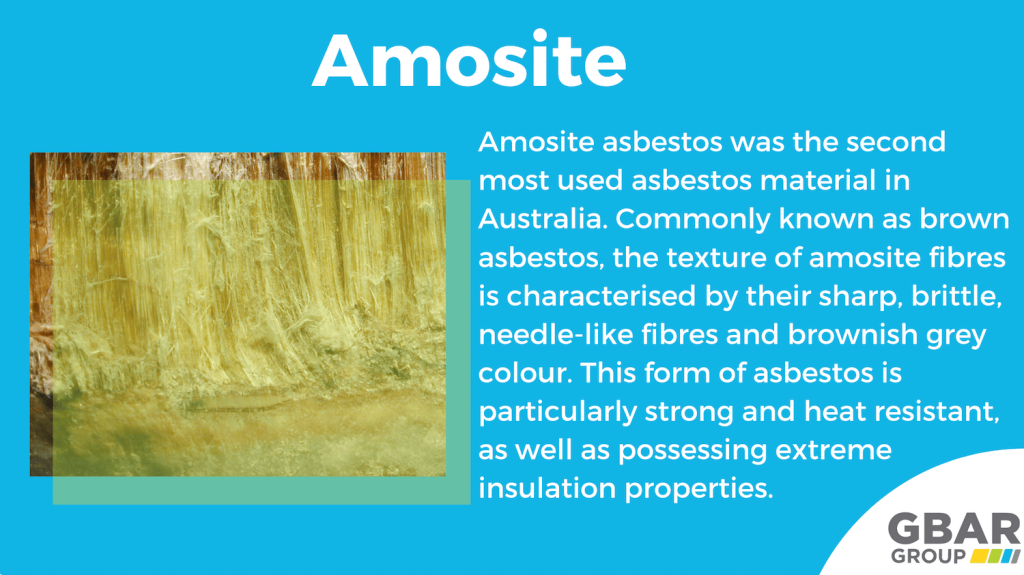

Health Risks of Asbestos Exposure
Exposure to asbestos can lead to serious and sometimes life-threatening health conditions. The inhalation of asbestos fibers can cause various respiratory diseases, including:
Asbestosis
Asbestosis is a chronic lung condition caused by the scarring and inflammation of lung tissue due to asbestos exposure. It can result in shortness of breath, a persistent cough, and reduced lung capacity. Asbestosis usually develops over a long period, often after prolonged exposure to high levels of asbestos fibers.
Lung Cancer
Exposure to asbestos can significantly increase the risk of developing lung cancer. The risk is particularly high among individuals who smoke or have a history of heavy asbestos exposure. Lung cancer caused by asbestos typically presents with symptoms such as coughing, chest pain, and difficulty breathing.
Mesothelioma
Mesothelioma is a rare but aggressive type of cancer that affects the lining of the lungs, abdomen, or heart. It is primarily caused by asbestos exposure and has a long latency period, often developing many years after initial exposure. Mesothelioma has poor prognosis and limited treatment options.
Other Health Effects
In addition to the more well-known diseases, asbestos exposure has also been linked to other health issues such as pleural plaques, pleural effusion, and asbestos-related pleural and peritoneal cancers. The severity of these health effects can vary depending on the duration and intensity of asbestos exposure.
Regulation and Control Measures
Due to the recognized health risks associated with asbestos, several countries have implemented regulations and control measures to minimize exposure and protect public health.
Asbestos Bans
Many countries have banned or restricted the use of asbestos due to its hazardous nature. These bans aim to prevent further exposure to asbestos fibers and reduce the incidence of asbestos-related diseases.
Handling and Disposal
Safe handling and proper disposal of asbestos-containing materials are crucial to prevent fiber release and subsequent exposure. Trained professionals should carry out asbestos removal, following specific guidelines and regulations. Specialized techniques, such as wetting or encapsulation, may be used to control the release of asbestos fibers during handling and removal.
Protective Measures
Individuals who work with or are exposed to asbestos should take appropriate protective measures. This may include wearing personal protective equipment (PPE) such as respirators, gloves, and coveralls. Following strict safety protocols and guidelines is necessary to minimize the risk of asbestos exposure.
In conclusion, asbestos is a group of fibrous minerals with various colors and properties. Understanding the different types and colors of asbestos is essential for its proper identification and safe handling. The most common color of asbestos is white or off-white, associated with chrysotile asbestos. However, it is important to note that all types of asbestos, regardless of color, pose significant health risks if fibers are released and inhaled. Health regulations and control measures are in place to minimize asbestos exposure and protect public health.

